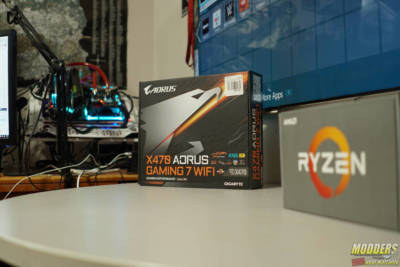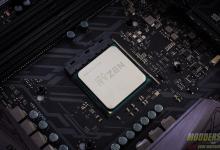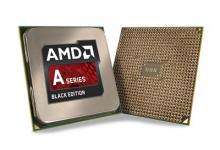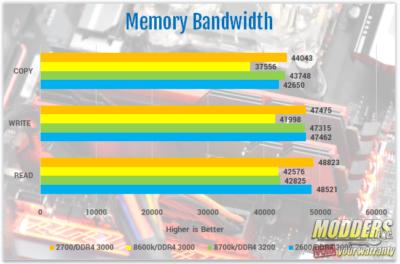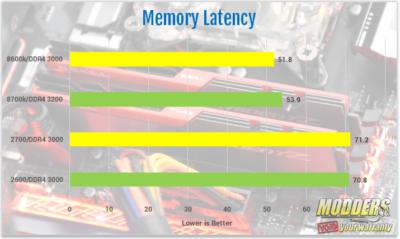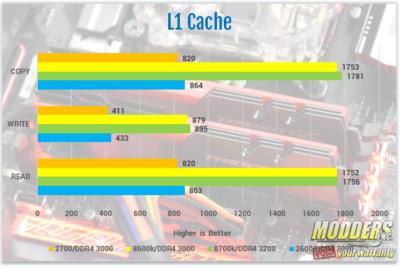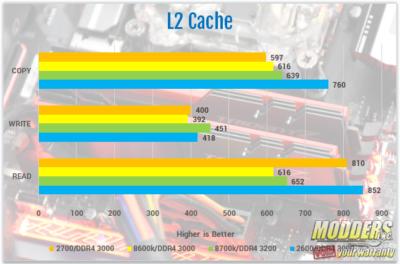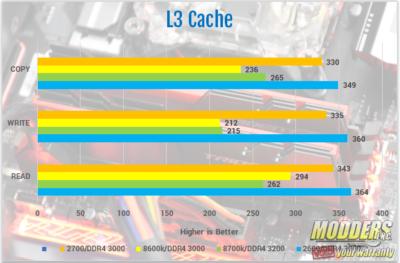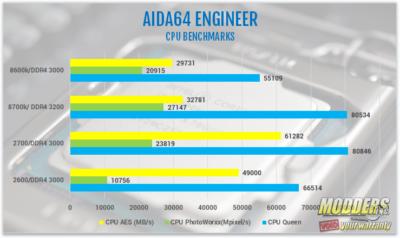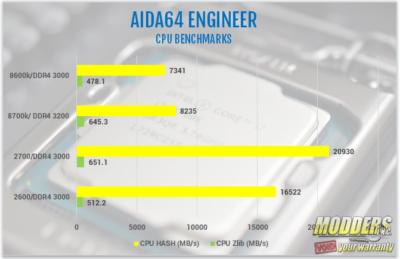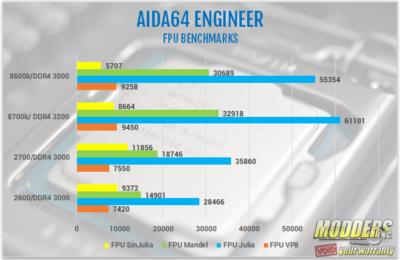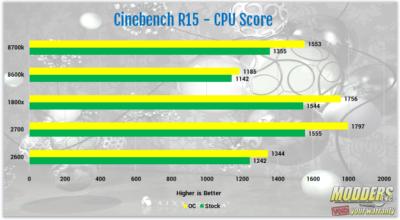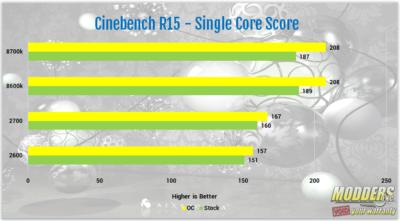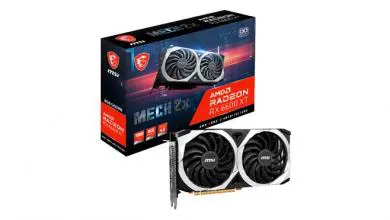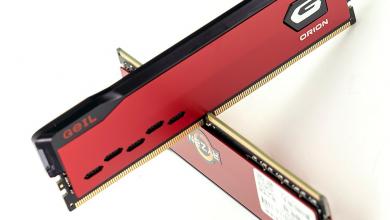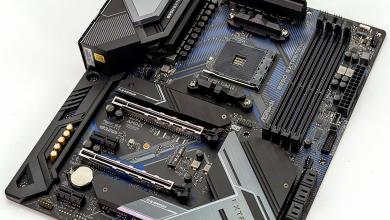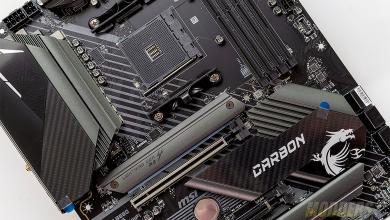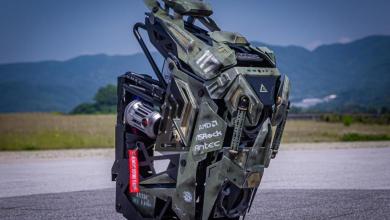Test System
- R5 2600 and R7 2700
- AORUS X470 Gaming 7 WIFI
- EVGA GTX 1070 TI FTW2
- 16 GB HyperX Predator DDR4 3000 CAS 15
- Seasonic X Series 850 Watt 80+ Gold PSU
- Samsung 250 GB 960 EVO (OS)
- 480 GB San Disk SSD Plus
- Custom Alpha Cool Loop (CPU Only)
- In Win 101c
- In Win Polaris RGB Fans
AIDA64 ENGINEER
AIDA64 has a set of several 64-bit benchmarks to measure how fast the computer performs various data processing tasks and mathematical calculations. Multi-threaded memory and cache benchmarks are available to analyze system RAM bandwidth and latency. Benchmark pages of AIDA64 Extreme provide several methods to measure system performance. These benchmarks are synthetic, so their results show only the theoretical maximum performance of the system. The AIDA64 suite has various benchmarks for CPU, FPU, GPU, storage and memory testing.
Memory Testing
The memory I used for testing is a 16 GB, 2 x 8 kit of HyperX Predator 3000 MHz, CAS 15. The first part of the AIDA64 memory test is the latency test. The latency is measured in nanoseconds. With X.M.P profile #1 enabled, I had several issues. The least of which was my CPU phantom throttling. However, with XMP Profile #2 enabled, the system runs great. So, with XMP profile 1 set and the memory running at 3000 MHz, the latency was 70.8 nanoseconds paired with the R5 2600 and 71.2 nanoseconds paired with the R7 2700. On the memory bandwidth test, the HyperX Predator kit I used scored 48521 on the read, 47462 on the write and 42650 on the copy for the R5 2600. For the R7 2700, the read was 48823, the write was 47475 and the copy was 44043.. For the L1, L2 and L3 cache, the read, write and copy are on the charts below.
On the memory bandwidth test, all the results were very close, with the 2700 coming out on top and the 2600 a close second. The Latency was a different story. Although both the 2700 and 2600 were very close, they were a bit behind their Intel counterparts. For the record, the memory used to test the 8600k was the same as with both Ryzen chips. The Memory used to test the 8700k was different.
CPU Queen is an integer benchmark that tests branch prediction and misprediction penalties. CPU PhotoWorxx tests the SIMD integer arithmetic execution units of the CPU and the memory subsystem. CPU ZLib is a compression benchmark that tests the combined CPU and memory performance. CPU AES is a multi-core encryption benchmark that uses Advanced Encryption Standard data encryption. CPU Hash is an integer benchmark that measures performance using the SHA1 hashing algorithm. FPU Julia measures single precision FP, FPU Mandel measures double precision FP, FPU Sin Julia measures extended precision FP while FPU VP8 is a video compression test utilizing the FPU Julia fractal module. A quick side note, each processor was tested with different memory, running at different speeds. Since each system was different, it’s not a side by side comparison.
On the CPU tests in Aida64, the 2700 and 2600 both did excellent, coming out far ahead of the 8600k and 8700k. However, the CPU Queen test was a close one, with the 2700 coming out just ahead of the 8700k. The FPU tests were a different story. Although both Ryzen chips did fairly well, this was where Intel won out. That being said, both the 2600 and 2700 did exceptionally well in Aida64.
Cinebench R15
Based on MAXON’s award-winning animation software Cinema 4D, CINEBENCH is a real-world cross platform test suite that evaluates your computer’s performance capabilities. It has both the single thread and full performance test for your CPU, as well as an Open-GL test for your GPU. Cinebench R15 is one of the most widely used benchmarks used to test the performance. It puts the CPU under 100% load, but only for a very short time. Its gives a good baseline for your CPU. However, I wouldn’t use it for testing the stability of an overclock. I ran both the R5 2600 and the R7 2700 on both their stock settings and overclocked, as high as I could push them. AT its stock speed of 3.4 GHz, the R5 2600 achieved a score of 1242 CB on multithread and 151 CB on single thread. Overclocked to 4.049 GHz, it hit 1344 CB on multithread and 156 CN on single thread. As for the 2700, it did far better than I had expected. At stock, the R7 2700 hit 1555 CB on multithread and 160 on single thread. Overclocked to 4.099 GHz, the 2700 hit 1797 CB on the multi-thread test and 167 CB on the single thread test. I was very pleased with the results on Cinebench R15, especially with the 2700. After writing 90% of this review, and making all the charts, The 2700 broke its best score, hitting 1810 on Cinebench R15.
X264 FHD
x264 is a free software library for encoding video streams into the H.264/MPEG-4 AVC format. x264 FHD measures how efficient a system is in encoding H.264 video and produces results in frames-per-second. H.265/HEVC video encoding is the future of video able to compress significantly larger resolution videos including 4K and make streaming a possibility. The 2700 ran the x264 FHD benchmark at an average of 43.45 frames per second and the 2600 at an average of 40.17 frames per second. Both chips did very well in this test.
X265
x265 is an open-source implementation of the H.265 standard and x.265 HD benchmark tests the CPU’s ability to process an HEVC video. This benchmark is run by the processor alone. The 2700 averaged 25.03 frames per second. The 2600 averaged 22.54 frames per second. The 2700 scored not even a frame less than the 8600k. Both processors did better than I had originally expected.
7-Zip
The 7-zip benchmark shows a rating in MIPS (million instructions per second). The rating value is calculated from the measured speed, and it is normalized with results of Intel Core 2 CPU with multi-threading option switched off. So, if you have modern CPU from Intel or AMD, rating values in single-thread mode must be close to real CPU frequency. There are two tests, compression with LZMA method and decompression with LZMA method. Once the total passes reach 100, the score is taken. 7-Zip gives the resulting score for decompressing, compressing and an overall score. The Decompressing score for the 2700 was 41906 MIPS or Million Instructions per Second. The Compression score was 36005 MIPS and the overall score was 38596 MIPS. The Decompressing score for the 2600 was 34626 MIPS. The Compression score was 29743 MIPS and the overall score was 332184 MIPS. I also added the 8600k in for comparison. As you can see, the 2700 did best in all tests. Next was the 2600 in everything but the compression test. I’ll admit, I had expected the 8600k to do better than the 2600. But I was wrong.
WINRAR
WinRAR is a file archiver utility for Windows, developed by Eugene Roshal of win.rar GmbH. It can create and view archives in RAR or ZIP file formats and unpack numerous archive file formats. Both the 2600 and 2700 ran Winrar for about 20 minutes each. The final results for the 2600 was 8987 KB/s. The results for the 2700 was 11487 KB/s.
Handbrake
HandBrake is a free and open-source video transcoder, originally developed in 2003 by Eric Petit to make ripping a film from a DVD to a data storage device easier. Essentially, it can convert video to almost any modern format. HandBrake is available for Linux, macOS, and Windows. The workload video file is a ~6.27 GB, 3840 x 1714, 73.4 Mbps, 24fps, H.264, .mov video file that is transcoded to a ~1480 MB, 1920×858, ~17.1 Mbps, 24fps, H.264, .mp4 video file. The video file is called Tears of Steel. The R7 2700 encoded the file in 4 minutes and 20 seconds, a bit slower than the 1800x I got at launch. The R5 2600 did the same file in 4 minutes and 56 seconds.
PCMark 8
The PCMark 8 Storage benchmark is used to test the performance of SSDs, HDDs and hybrid drives with traces recorded from Adobe Creative Suite, Microsoft Office and a selection of popular games. You can test any recognized storage device, including local and external drives. Unlike synthetic storage tests, the PCMark 8 Storage benchmark highlights real-world performance differences between storage devices. We ran all three of the conventional benchmarks PCMark 8 has to offer. These are Work, Creative, Home and we also ran the Storage benchmark. All benchmarks were the conventional, as opposed to the accelerated. For comparison, I’ve added results from my last two reviews. These are results from both the 8600k and 8700k. As the chart shows, the only section the Ryzen processors really fall behind just a bit is the Creative benchmark. In Home, Work and Storage, both the R5 2600 and the R7 2700 were very close to each other with the 2700 just slightly ahead.
